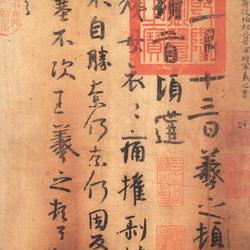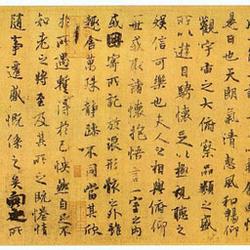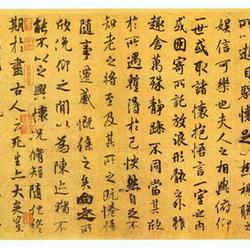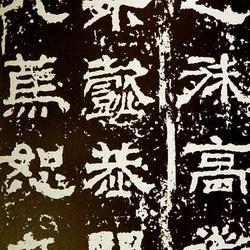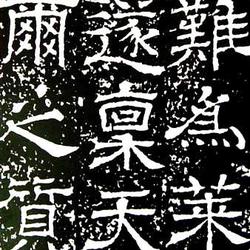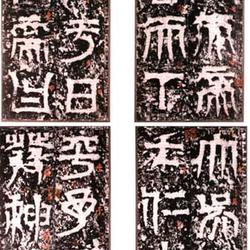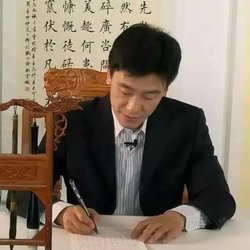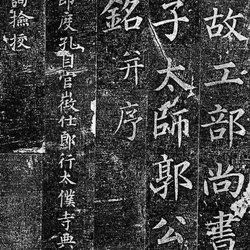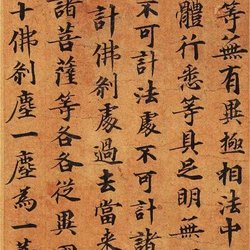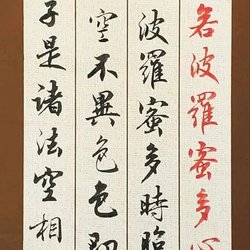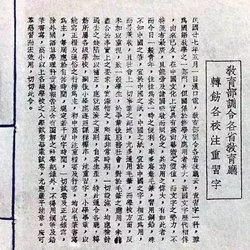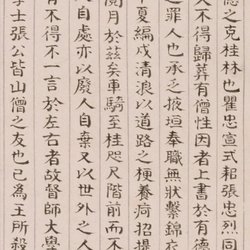
"Feng Feng Lanting Preface" volume, Tang Dynasty, Feng Chengsu's copy, paper, running script, length 24.5cm, width 69.9cm. Collection of the Palace Museum, Beijing
Feng Chengsu: During the Zhenguan period of Emperor Taizong of the Tang Dynasty (627--649 years), he served as the calligrapher of Zhihong Wenguan. Emperor Taizong of the Tang Dynasty once produced the authentic copy of Wang Xizhi's "Le Yi Lun" and ordered Feng to copy it and give it to his ministers. Feng You, Zhao Mo, Zhuge Zhen, Han Daozheng, Tang Puche and others were ordered to copy several copies of Wang Xizhi's "Lanting Preface". Taizong gave it to the crown prince and other kings, which can be seen in the records of the past dynasties. His book was described as "exquisite in style, simple and simple in style." Other deeds are unknown.
This book is made of two pieces of paper, and the paper is smooth and fine. Because there is a small seal of the Shenlong reign of Emperor Zhongzong of the Tang Dynasty, Li Xian, at the front of the volume, it is called the "Shenlong version". Later, Xiang Yuanbian's inscription was found on the paper: "Feng Chengsu of Tang Zhongzong Dynasty was commissioned to copy the Jin Youjun General Wang Xizhi's Lanting Yie", so it was designated as Feng Chengsu's copy.
The front paper of this volume has 13 lines, with looser spacing, and the back paper has 15 lines, with tighter spacing, and then the front, back, left and right are mirrored, slanted and dense, well-proportioned, and the whole text is integrated, which is better than other copies. The pen is tilted and tilted repeatedly, the tip of the pen is sharp, and the pen is sometimes crossed and scratched. It not only retains the traces of tracing the original traces, but also reveals the characteristics of free copying. The combination of copying and copying makes it appear natural and vivid, and has a certain " It has the advantage of "preserving the authenticity" and is the most exquisite among the copies handed down from ancient times. It embodies the artistic style of Wang Xizhi's charming and colorful calligraphy and the graceful expression and bones. It is a Tang copy that is close to the original.
According to research, the small half-seal "Shenlong" at the beginning of the volume was not the seal of Emperor Zhongzong of the Tang Dynasty, but was added by later generations. Feng Chengsu's imitation is not credible, but it is still an ancient copy that has been circulated since the Tang Dynasty.
There is a four-character title "Tang Copying Orchid Pavilion" across the water in front of this volume, which is preceded by the four-character inscription "Jin and Tang Xin Yin" written by Qianlong. The back paper contains inscriptions, postscripts and inscriptions from 20 families from Song to Ming dynasties, and more than 180 seals. Its circulation process, based on various inscriptions, seals and records, is roughly as follows: Emperor Gaozong of the Southern Song Dynasty, Lizong Neifu, Prince Consort Yang Zhen, Yuan Guo Tianxi, Ming Neifu, Wang Ji, Xiang Yuanbian, Qing Dynasty Chen Ding, Ji Yuyong, Qianlong's inner palace. Records in the past dynasties include: Ming Dynasty Wang Diyu's "Coral Net Book Record", Wu Qizhen's "Calligraphy and Painting Notes", Qing Dynasty Bian Yongyu's "Shi Gutang Calligraphy and Painting Collection·Shu Kao", Gu Fu's "Life is Spectacular", Wu Sheng's "Daguan Lu", Ruan Yuan's "Shiqu" "Essays", "Sequel to Shiqu Baoji" and other books. Engraved into the "Eight Pillars of Orchid Pavilion", ranked third. (Writer: Shan Guoqiang)

